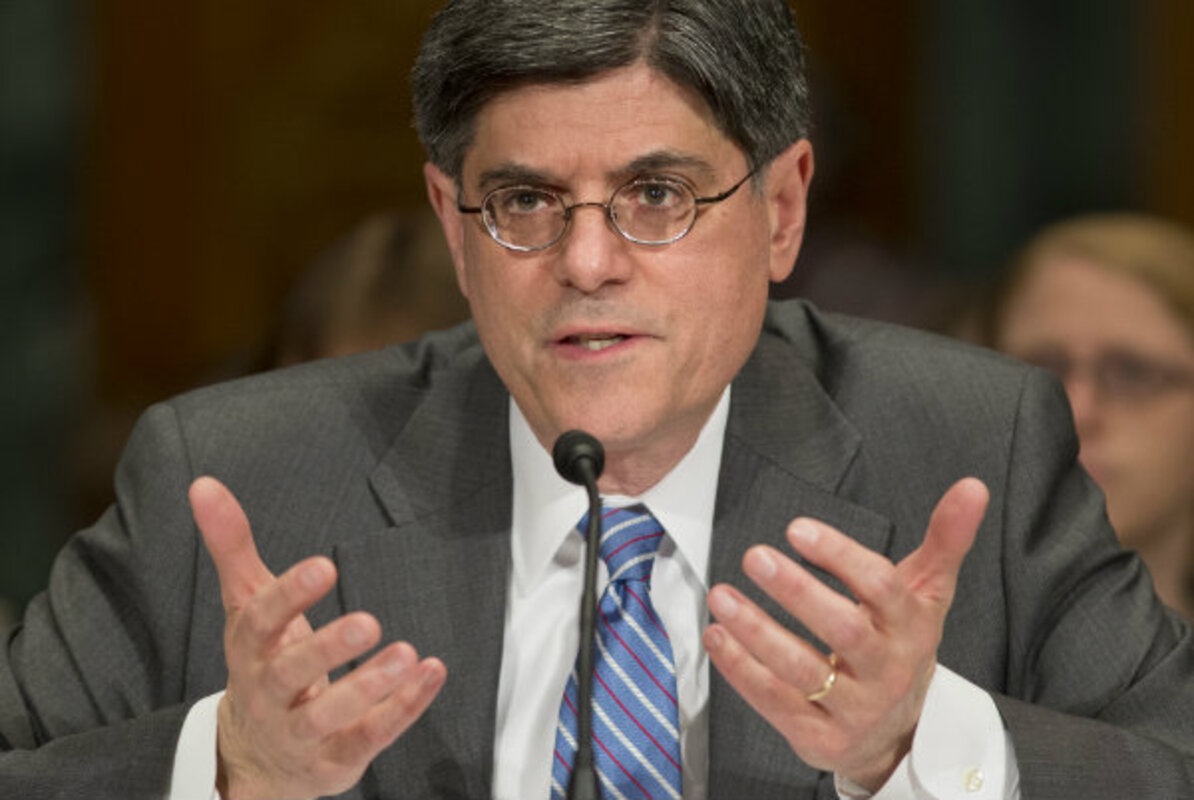Jack Lew, John Galt, and American universities
Loading...
| New York
Why does a university education cost so much?
I’ve got one kid in college and another on the way there, so the question is very much on my mind. I also teach at a hugely expensive university, which paid one of its executive vice-presidents more than $800,000 a year and loaned him at least $1.4 million to buy a home. He also received a $685,000 severance payment, and his loan was ultimately forgiven.
I speak of Jack Lew, President Obama’s nominee to lead the Treasury Department. I didn’t meet Lew when he worked at New York University, from 2002 to 2006. But I haven’t met most of the administrators atop our massive institution, which continues to hire more and more of them.
And that’s the real story in the controversy over Mr. Lew, who was confirmed by the Senate as President Obama's new Treasury secretary late yesterday. Most media reports have focused on Lew’s efforts to steer NYU student borrowers towards “preferred lenders” like Citigroup, which made Lew a top executive after he left NYU. In fairness to Lew, though, we really don’t know if there was any quid pro quo there.
Here’s what we do know: between 1975 and 2005, the number of “executive, administrative, and managerial employees” at American universities grew by 85 percent. Meanwhile, so-called “professional staff” – accountants, counselors, admission officers and so on – rose by a whopping 240 percent.
But the number of professors grew by just 51 percent – almost exactly the same rate as student enrollment. In 1975, colleges and universities employed one professor for every 16 students; 40 years later, there was one professor for every 15.
But the administrator-to-student ratios changed dramatically. In 1975, universities hired one administrator for every 84 students and one staffer for every 50 students. By 2005, there was an administrator for every 68 students and a staffer for every 21.
Here’s another way to look at it: Back in 1975, there were about 447,000 professors and 269,000 staffers and administrators. Four decades later, the staffers and administrators outnumbered the professors, 756,000 to 676,000.
And at the top of these pyramids, people pull down huge salaries and perks. By 2007, 12 university presidents earned more than a $1 million salary per year and 81 received more than $500,000. Less well-known are the packages showered on the presidents’ every-growing coterie of so-called “cabinet” hires.
By 2003, for example, the University of Maryland at College Park employed six vice presidents, six associate vice-presidents, five assistant vice-presidents, six assistants to the president, and six assistants to the vice president. And the vice presidents’ salaries climbed 50 percent between 1998 and 2003, when student tuition rose sharply as well.
Let’s be clear: Administrative bloat isn’t the only reason for skyrocketing college costs. Universities now provide a host of new student services, and they also have to comply with an ever-growing maze of complex government regulations. And not every administrator gets the kind of astronomical compensation that Jack Lew reportedly received.
But students and parents have the right to know where their dollars are going. Instead of focusing narrowly on Lew’s compensation package, then, we should demand that all universities – private as well as public – release the salaries of all their employees.
Administrators won’t like that, of course. But some professors won’t like it either, because they’ve cut their own extraordinary deals. Universities used to be like professional baseball, in the era of the reserve clause: You played for the team that drafted you, and you had to abide by its terms.
Then everyone became a free agent, trying to negotiate the best deal for themselves. I have colleagues who routinely apply for jobs at other institutions – not because they want to move, but because they want more pay and lighter teaching loads. And who pays for that? Students and their parents do.
The great irony of the elite American university is that it’s populated mostly by liberal do-gooders, many of whom behave like conservative self-maximizers. In our academic writings and political pronouncements, many of us decry the fraying of community and the each-man-for-himself ethos of modern America. But when it comes to feathering our nests, too many of us act more like characters in an Ayn Rand novel.
“Why is it moral to serve the happiness of others, but not your own?” asks John Galt, the superhero of Rand’s “Atlas Shrugged.” To Rand, of course, it wasn’t. The best people looked out for their own interests, leaving the mediocre masses in the dust.
At our universities, the distance between the John Galt and the Jack Lew positions is a lot shorter than many of us would like to admit. Rather than raking Lew over the coals, then, universities might pause to look in the mirror. And we should show our true face to the rest of America, which deserves to know exactly what it’s paying for.
Jonathan Zimmerman teaches history and education at New York University. He is the author of “Small Wonder: The Little Red Schoolhouse in History and Memory” (Yale University Press).




